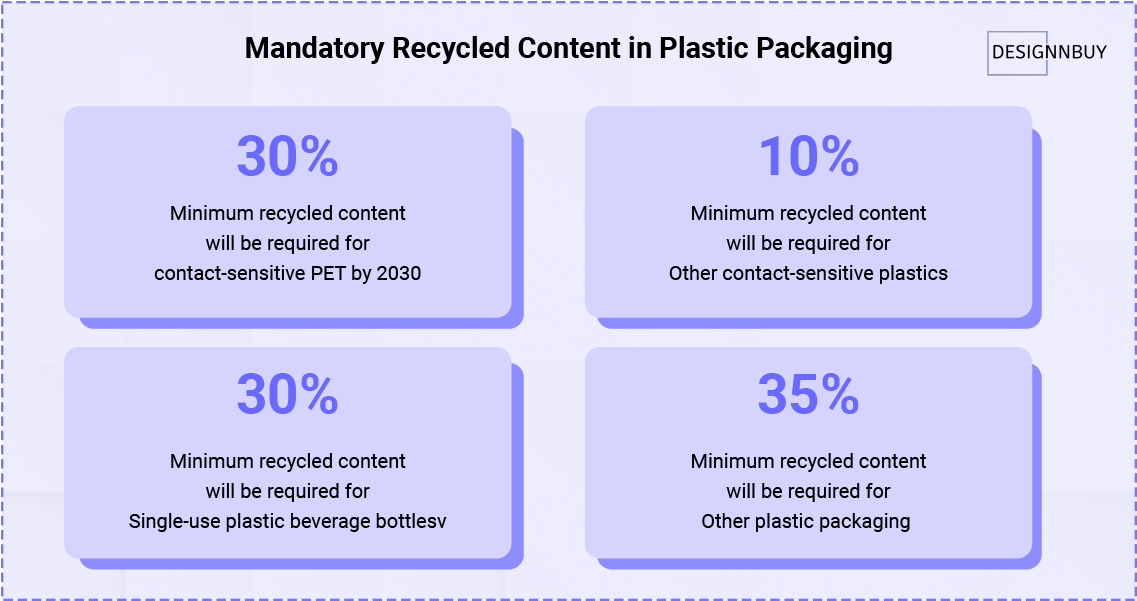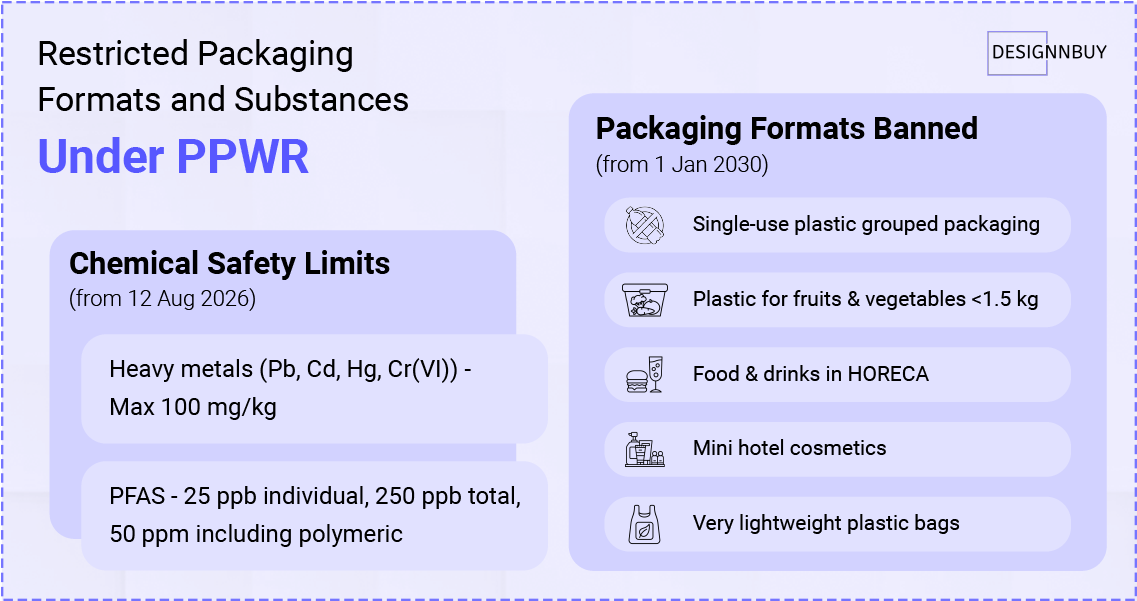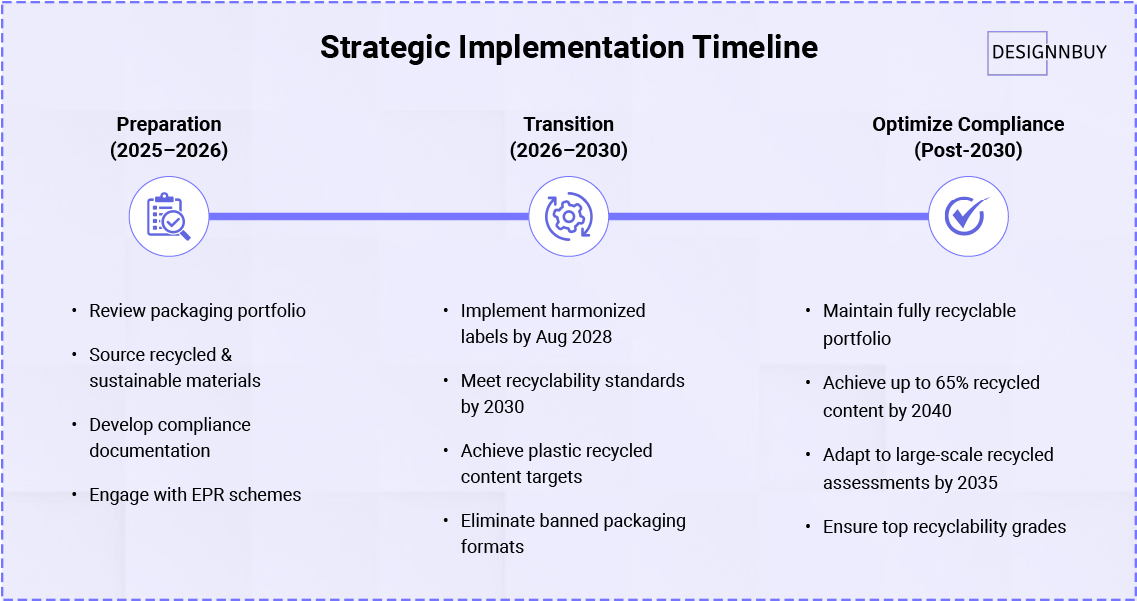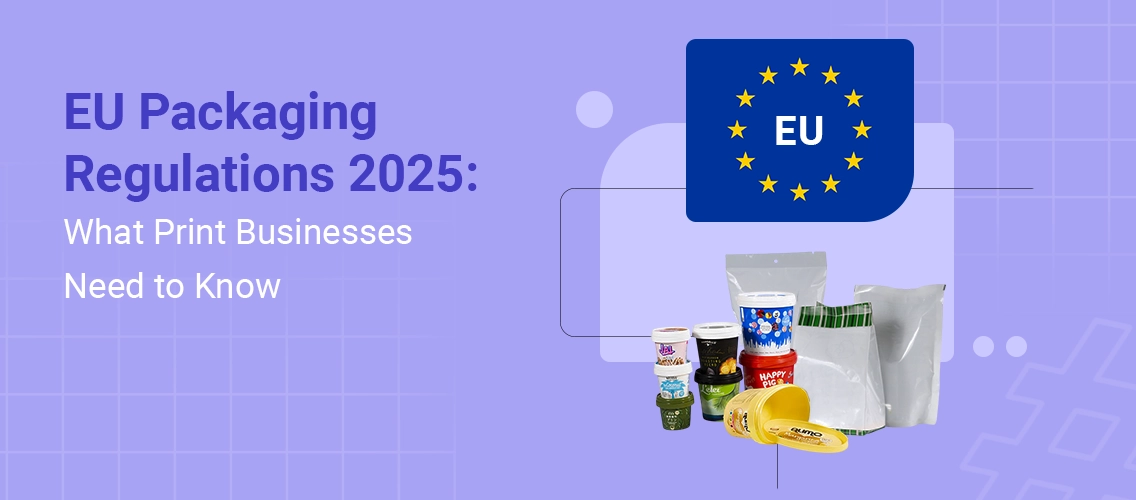On February 11, 2025, the European Union (EU) adopted the new Packaging and Packaging Waste Regulation (PPWR), a landmark law that will impact how packaging is designed, produced, and recycled across all member states.
This update is the biggest shift since the older Directive 94/62/EC and is already making headlines in EU packaging regulation news.
Unlike the previous directive, which left room for interpretation by individual countries, the PPWR sets uniform rules that apply directly across the EU.
For print businesses, this is not just another piece of legislation; it’s a turning point.
The new EU packaging regulations will shape how you work with materials, what you can sell, and how you prove compliance.
In short, understanding the PPWR is critical for staying competitive and future-proofing your packaging business.
Table of Contents
What Is PPWR? Understanding the New Framework
So, what is PPWR and why is it so important?
The Packaging and Packaging Waste Regulation (PPWR) is a comprehensive EU law designed to reduce packaging waste, improve recycling rates, and push Europe closer to a circular economy.
Unlike directives, which require each country to create its own version of the rules, a regulation applies directly—meaning every EU member state must follow the exact same standards.
Here’s what makes the PPWR regulation different:
- It applies from August 12, 2026, giving businesses a short window to prepare.
- It covers all types of packaging, regardless of materials such as paper, plastic, glass, metal, wood, or mixed materials.
- It sets rules for the entire packaging lifecycle, from design and production to recycling and disposal.
The overall aim is clear: to cut unnecessary waste, make all packaging recyclable, and ensure businesses operate under the same set of rules across Europe.
For print businesses, this means every design choice, whether it’s inks, coatings, substrates, or finishing, must now be considered through the lens of sustainability and recyclability.
Critical Compliance Requirements for Print Businesses
What the New EU Packaging Regulations Mean for Print Businesses
The new EU Packaging and Packaging Waste Regulation (PPWR) sets strict rules that every business must follow.
For print businesses, this means rethinking packaging design, materials, and production methods. Here are the most important requirements you need to prepare for:
Universal Recyclability by 2030
By January 1, 2030, all packaging placed on the EU market must be fully recyclable. This goes beyond simply using “eco-friendly” materials. Packaging must be designed so it can be collected, sorted, and recycled using existing large-scale systems.
To track progress, the PPWR introduces a grading system (A, B, C) based on recyclability performance. Packaging that scores below 70% recyclability will be considered non-compliant and cannot be sold in the EU.
Looking ahead, from 2035, businesses will also need to prove that their packaging is not just recyclable in theory but actually recycled at scale, with minimum recycling rates across different materials (e.g., 30% for wood, 55% for plastics).
💡 What this means for you: Print businesses must start redesigning packaging now, using mono-materials, packaging design software, simplifying inks and finishes, and ensuring designs work within existing recycling streams.
Mandatory Recycled Content in Plastic Packaging

Another major rule in the PPWR regulation is the requirement for minimum levels of recycled content in plastic packaging. From January 1, 2030, these rules will apply:
Mandatory Recycled Content in Plastic Packaging
| Packaging Type | Minimum Recycled Content (2030) |
| Contact-sensitive PET | 30% |
| Other contact-sensitive plastics | 10% |
| Single-use plastic beverage bottles | 30% |
| Other plastic packaging | 35% |
By 2040, these targets rise sharply, with some categories requiring up to 65% recycled content.
💡 What this means for you: If you produce packaging with plastic layers or coatings, you’ll need to source post-consumer recycled plastics that meet EU standards, either from within the EU or approved third countries.
Packaging Minimization Requirements
From January 1, 2030, the EU will enforce strict packaging minimization rules. Businesses must ensure packaging uses only the minimum necessary weight and volume to perform its function.
The EU Packaging regulation bans packaging designed only to make products look bigger (like false bottoms, double walls, or unnecessary layers) unless protected under specific design rights or trademarks registered before February 11, 2025.
E-commerce packaging will also face restrictions: empty space must not exceed 50% of the package.
💡 What this means for you: Printers working with brands on packaging design should prepare to reduce void space and eliminate purely decorative features that don’t serve a functional purpose.
Restricted Packaging Formats and Substances Under PPWR

The new EU packaging regulations go beyond recycling targets, they also set strict rules on which packaging materials and substances are allowed.
Under the PPWR regulation, businesses must pay close attention to both chemical safety and banned packaging formats.
Chemical Safety Requirements
To protect human health and the environment, the PPWR continues restrictions on heavy metals such as lead, cadmium, mercury, and hexavalent chromium, with a combined maximum limit of 100 mg/kg.
More importantly, from August 12, 2026, the regulation introduces comprehensive restrictions on per- and polyfluoroalkyl substances (PFAS) in food-contact packaging. The limits are strict:
- 25 ppb for any individual PFAS
- 250 ppb for the total sum of PFAS
- 50 ppm for overall PFAS, including polymeric forms
This is a major update in EU packaging regulation news, as PFAS have been widely used in grease-resistant coatings and are now under heavy scrutiny.
Banned Packaging Formats
The PPWR also sets a clear timeline for phasing out packaging formats considered unnecessary or wasteful. From January 1, 2030, the following will be prohibited:
- Single-use plastic grouped packaging for convenience purchases
- Plastic packaging for fresh fruits and vegetables under 1.5 kg (with limited exemptions)
- Single-use plastic packaging for food and drinks consumed on HORECA premises (hotels, restaurants, cafés)
- Single-use cosmetic and toiletry packaging in the accommodation sector (e.g., mini hotel shampoo bottles)
Very lightweight plastic carrier bags, except when used for hygiene or loose food items
Labelling and Information Requirements
One of the most practical changes introduced by the PPWR regulation is the requirement for clearer, standardized labelling.
The goal is to help consumers make the right disposal choices and improve recycling rates across the EU.
Harmonized Labelling System
From August 12, 2028, all packaging placed on the EU market must display harmonized labels. These will indicate the material composition of packaging and give consumers clear instructions for sorting and recycling.
- Labels will be pictogram-based so that they are easy to understand across all member states.
- They must also be designed to be accessible for people with disabilities.
- For compostable packaging, the label must state that it is only suitable for industrial composting, not home composting, and should never be discarded in nature.
This system is intended to eliminate confusion for consumers and ensure consistent communication across the single market.
Digital Information Requirements
The regulation also introduces digital labelling to support the shift toward smarter, data-driven packaging systems.
- Reusable packaging must feature a QR code or other digital data carrier.
- Scanning the code will give consumers and businesses access to information about reusability, local re-use systems, and collection points.
- The system will use open, standardized technologies to ensure interoperability and wide accessibility.
For print businesses, this means packaging design will increasingly involve integrating scannable codes and digital features, not just printing visuals.
Extended Producer Responsibility and Registration
The PPWR regulation places clear responsibilities on businesses that produce, import, or distribute packaging.
Known as Extended Producer Responsibility (EPR), these rules ensure that producers take accountability for the entire lifecycle of their packaging from design to disposal.
Producer Registration Requirements
All producers must register in national registers within 18 months of the implementing acts. Without registration, businesses cannot place packaging on the EU market.
This system allows regulators to track compliance and ensure that every company contributes fairly to waste management efforts.
Financial Contributions and Modulation
Producers are also responsible for covering the costs of waste management through EPR schemes. The PPWR introduces a graded fee system:
- Packaging that is easier to recycle or contains higher recycled content will pay lower fees.
- Packaging that is harder to recycle or contains little recycled material may face higher contributions.
This creates a strong economic incentive for businesses to design sustainable, recyclable packaging from the start.
What It Means for Print Businesses
- You must ensure all packaging designs meet the PPWR’s recyclability and labelling requirements.
- Working with clients, you may need to verify recycled content, recyclability grades, and compliance documentation.
- Early registration and active engagement with EPR schemes can reduce risks, lower costs, and position your business as a sustainability leader in the EU market.
By taking responsibility for your packaging, your print business not only complies with EU law but also builds credibility with environmentally conscious brands and consumers.
Strategic Implementation Timeline

Navigating the new EU packaging regulations can feel overwhelming, but the PPWR provides a clear timeline for businesses to prepare. Breaking compliance into phases helps print businesses manage changes efficiently and stay ahead of deadlines.
2025–2026: Preparation Phase
This is the time to assess and plan:
Conduct a full review of your packaging portfolio to identify materials, designs, and coatings that may not meet recyclability or chemical safety requirements.
Begin sourcing suppliers who can provide post-consumer recycled materials and sustainable alternatives.
Develop documentation systems to track recycled content, recyclability grades, and compliance with chemical safety limits.
Engage early with extended producer responsibility (EPR) schemes to understand fees, obligations, and reporting requirements.
2026–2030: Transition Phase
During this period, businesses must implement the most critical changes:
Introduce harmonized labels on packaging (from August 2028) to meet consumer sorting requirements.
Ensure all packaging meets recyclability standards by 2030, including grades A, B, or C.
Meet recycled content targets for plastic packaging, starting with PET and other materials as required by the PPWR.
Phase out banned packaging formats and adopt new designs that comply with chemical and safety regulations.
Post-2030: Full Compliance and Optimization
After 2030, businesses will need to maintain and refine compliance:
Keep a 100% recyclable packaging portfolio.
Achieve enhanced recycled content targets (up to 65% for certain plastics by 2040).
Adapt to recycled-at-scale assessments starting in 2035.
Maintain high recyclability grades and ensure packaging continues to meet all PPWR standards.
💡 Key takeaway: Treat the transition as a strategic opportunity. Early action reduces costs, ensures compliance, and positions your print business as a sustainability leader in the EU market.
Cost Implications and Business Strategy
The PPWR regulation marks the biggest change in EU packaging rules in decades. For print businesses, early compliance isn’t just about meeting requirements—it’s a chance to innovate, reduce waste, and gain a competitive edge.
Act now to assess your packaging, engage suppliers, and adopt sustainable designs. Businesses that move quickly will not only comply with the EU packaging regulations but also lead in a market where sustainability drives growth.
Preparing for Success
The PPWR regulation marks the biggest change in EU packaging rules in decades. For print businesses, early compliance isn’t just about meeting requirements—it’s a chance to innovate, reduce waste, and gain a competitive edge.
Act now to assess your packaging, engage suppliers, and adopt sustainable designs. Businesses that move quickly will not only comply with the EU packaging regulations but also lead in a market where sustainability drives growth.
Stay Ahead of PPWR Compliance with DesignNBuy
Simplify compliance and creativity with our packaging design software




